Numerical models for Aimable WARheaDs
Stefano Dell’Amore
Simmel Difesa
Simmel Difesa S.p.A, an italian company of Chemring Group leader in the sector of mid-large caliber ammonition (for naval & ground artillery), is the only one in the Group which designs, develops and produces “Missile Components” like Warhead, Safe and Arm Device and Motor Ignition Device. Some examples of this products are Warheads for Aster Missiles (Conventional and Dual) and Warhead and Safe and Arm Device for Aspide Missile, Safe and Arm Device for Marte missile and the Motor Ignition Device for Iris-T missile.
In ordinary warheads, like the ones produced by Simmel Difesa, fragments are projected from the blast of the explosive charge in a region of space that is symmetric with respect to the axis of the warhead. This aspect, in relation to the position and size of the target which can be a plane, a ship, a cruise missile, or a ballistic missile, involves a considerable dissipation of energy contained in the explosive charge. With respect to ordinary warheads, an improvement could be obtained with the use of “aimable warheads” which can improve the lethality addressing the energy contained in the explosive charge in the direction of the target or obtain the same performance with lower ratios C/M (explosive mass/metal mass). This second aspect can become important if the goal is the reduction of collateral damage produced by the detonation of the warhead or, in other words, if the goal is to increase the ability to perform “surgical” action of the warhead against the target. In this scenario comes the research program AWARD, which Simmel Defense is carrying out with MBDA.IT with the financial contribution of the Italian Ministry of Defence. In phase 1 of this research program, which has just ended, two different aimable warheads called “Opening Warhead” (based on a new working principle introduced by Simmel Difesa) and “Deformable Warhead” (application of US patent of 1973) have been analyzed with the scope to improve the lethality of ordinary isotropic warhead. Numerical models implemented in Ansys Autodyn® 13.0 have been carried out for both the aimable warhead considered showing the feasibility of the solutions proposed and identifying the functional parameters and the expected performances. The most important critical design and the margin of improvements for the solutions proposed have been identified. The research will continue in phase 2 with experimental trials on prototypes which implement the concepts proposed.



